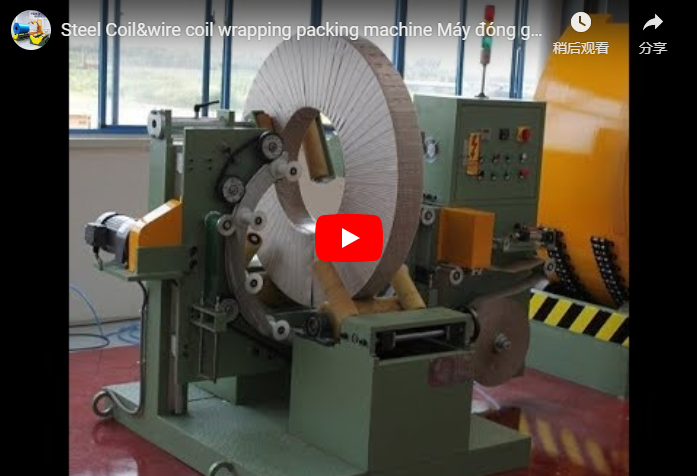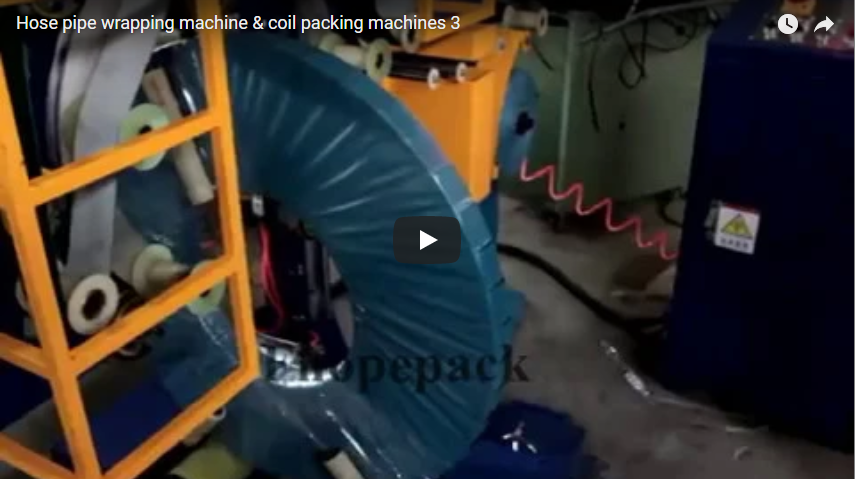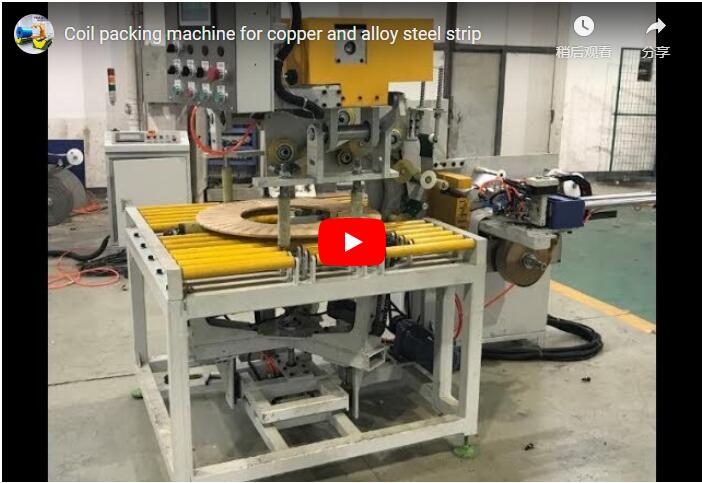Mastering Coil Protection: A Fabricator's Guide to Eye-Through Wrapping Technology
In the demanding world of metal fabrication and processing, safeguarding valuable coiled stock – be it steel, copper, aluminum, or specialized alloys – during handling, storage, and transit is paramount. Surface imperfections, corrosion, and contamination can quickly devalue materials and impact finished product quality. Manually wrapping these often heavy and cumbersome coils is not only time-consuming and labor-intensive but can also lead to inconsistent protection.
1. The Challenge: Vulnerability of Coiled Metals
Coils, by their nature, present unique packaging challenges. Their cylindrical shape and exposed surfaces make them susceptible to:
- Physical Damage: Scratches, dents, and edge damage during movement and stacking.
- Environmental Factors: Moisture, humidity, dust, and corrosive elements in the air leading to rust or oxidation.
- Handling Issues: Instability during transport if not properly secured.
Traditional wrapping methods often struggle to provide complete, uniform coverage, especially within the inner diameter (the "eye") of the coil.
2. The Solution: Eye-Through Orbital Wrapping Machines
Enter the Eye-Through Coil Wrapping Machine, often referred to as an orbital or horizontal ring wrapper. This automated system represents a significant leap forward in efficient and effective coil packaging. Unlike traditional turntable wrappers, these machines operate on a different principle:
- A ring or shuttle carrying the packaging material (typically stretch film, VCI paper, or crepe paper) passes through the eye of the stationary coil.
- As the ring orbits, it dispenses the wrapping material, spirally wrapping the coil from the inside out.
- This ensures complete, tight, and uniform coverage across all surfaces – inner diameter, outer diameter, and faces.
This method effectively seals the coil, providing a robust barrier against environmental hazards and securing the layers against shifting. The coil wrapping machine is versatile, capable of handling a wide range of coil types and sizes.
3. Key Technical Capabilities & Operational Advantages
Modern eye-through coil wrappers offer features crucial for today's fabrication environments:
- Versatile Coil Handling:
- Inner Diameter (ID): Accommodates a wide range, typically from 500mm upwards.
- Outer Diameter (OD): Can handle coils exceeding 2000mm.
- Width: Adaptable to various coil widths, often up to 1500mm or more.
- Weight Capacity: Designed for heavy loads, often several tons.
- Material Flexibility: Compatible with various wrapping materials:
- LLDPE Stretch Film: For containment and moisture resistance.
- VCI (Volatile Corrosion Inhibitor) Paper/Film: Actively prevents rust and corrosion, crucial for steel coils.
- Crepe Paper: Provides cushioning and moisture absorption.
- Woven Belts/PP: For heavier-duty securing needs.
- Adjustable Wrapping Parameters:
- Ring Speed: Variable rotation speed to match throughput requirements.
- Overlap Control: Precisely adjustable film/paper overlap (e.g., 10%-90%) for desired protection level and material economy.
- Film Tension Control: Ensures a tight, secure wrap without damaging the coil edges.
- Automation & Control:
- PLC Control System: Provides reliable and repeatable operation.
- HMI (Human-Machine Interface): Touchscreen controls for easy setup, parameter adjustment, and diagnostics.
- Automatic Film Cutting & Clamping: Reduces manual intervention and speeds up the cycle.
- Integration Potential: Can be seamlessly integrated into automated packaging lines with conveyors, upenders/downenders, and palletizing systems.
4. From the Shop Floor: Why Fabricators Embrace This Technology
From a fabricator's perspective, the benefits extend beyond just wrapping:
- Drastically Reduced Labor: Automating the wrapping process frees up personnel from a tedious, physically demanding task, allowing them to focus on higher-value activities. Anyone who's manually wrestled stretch film around a multi-ton steel coil understands the immediate ergonomic and time-saving benefits.
- Consistent, High-Quality Protection: Automated wrapping eliminates the inconsistencies inherent in manual methods. Every coil receives the same level of protection, reducing the risk of damage claims and improving customer satisfaction. The ability to incorporate VCI materials directly into the wrapping process is a major plus for preventing corrosion during storage or shipping.
- Improved Safety: Minimizes manual handling of heavy coils and repetitive motions associated with hand-wrapping, contributing to a safer work environment.
- Material Savings: Precise control over film tension and overlap optimizes material usage compared to often wasteful manual techniques.
- Enhanced Throughput: Significantly faster cycle times compared to manual wrapping increase overall packaging line efficiency, crucial for high-volume operations.
- Professional Presentation: Uniformly wrapped coils present a more professional image to customers.
5. Integrating into Your Workflow
These machines are rarely standalone units in larger operations. Consider how they fit with:
- Infeed/Outfeed Conveyors: Automating the movement of coils to and from the wrapper.
- Coil Upenders/Tippers: Orienting coils correctly (eye-to-the-sky or eye-horizontal) for wrapping and subsequent handling.
- Weighing and Labeling: Integrating scales and automatic label applicators post-wrapping.
6. Conclusion: A Strategic Investment in Coil Integrity
An eye-through coil packaging machine is more than just a wrapper; it's a strategic investment in protecting valuable inventory, optimizing labor, enhancing safety, and boosting operational efficiency. For fabricators and metal processors dealing with steel, copper, aluminum, or wire coils, this technology offers a robust, reliable, and cost-effective solution to ensure products reach their destination in pristine condition. By automating and standardizing the wrapping process, businesses can achieve greater productivity, profitability, and customer confidence.






